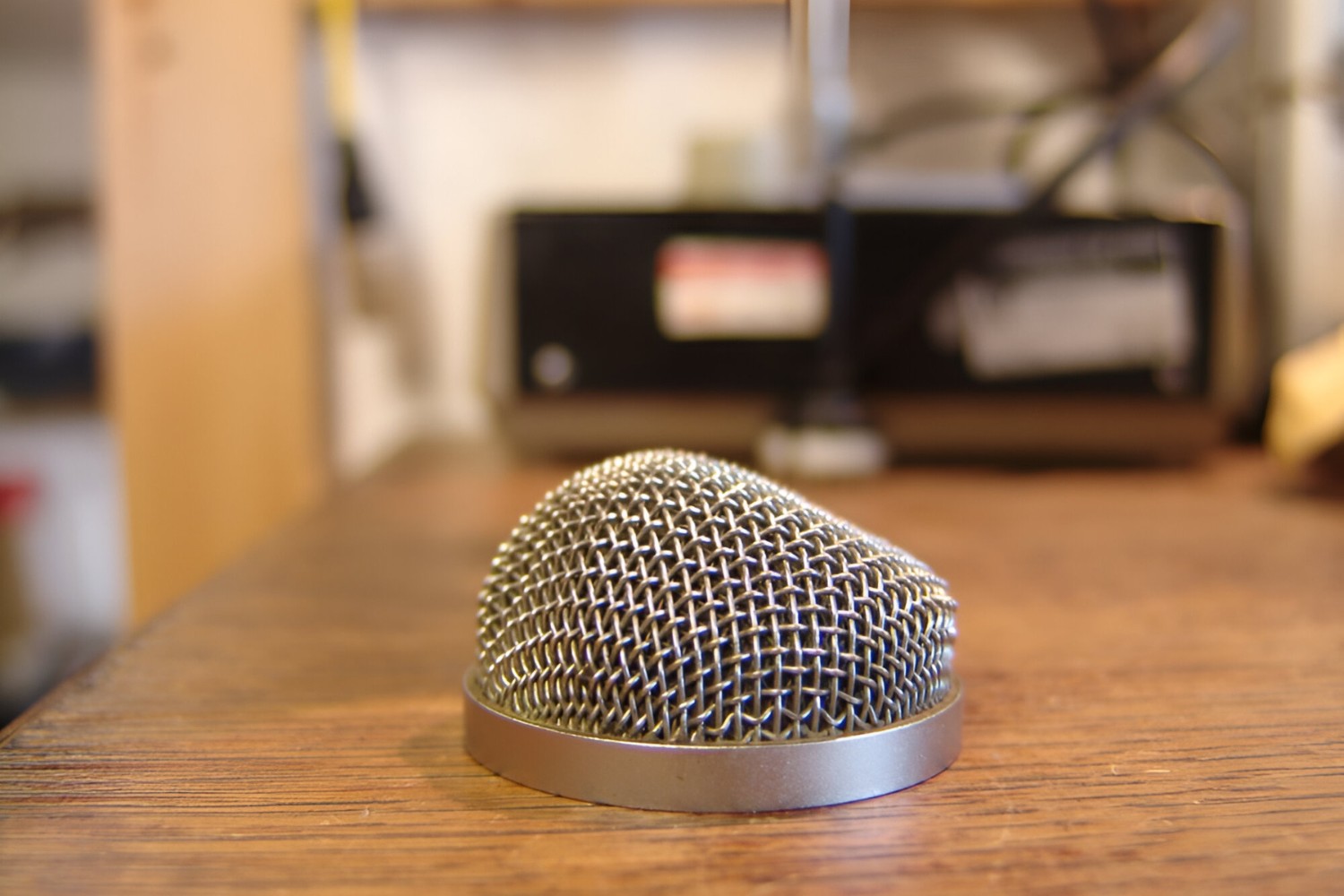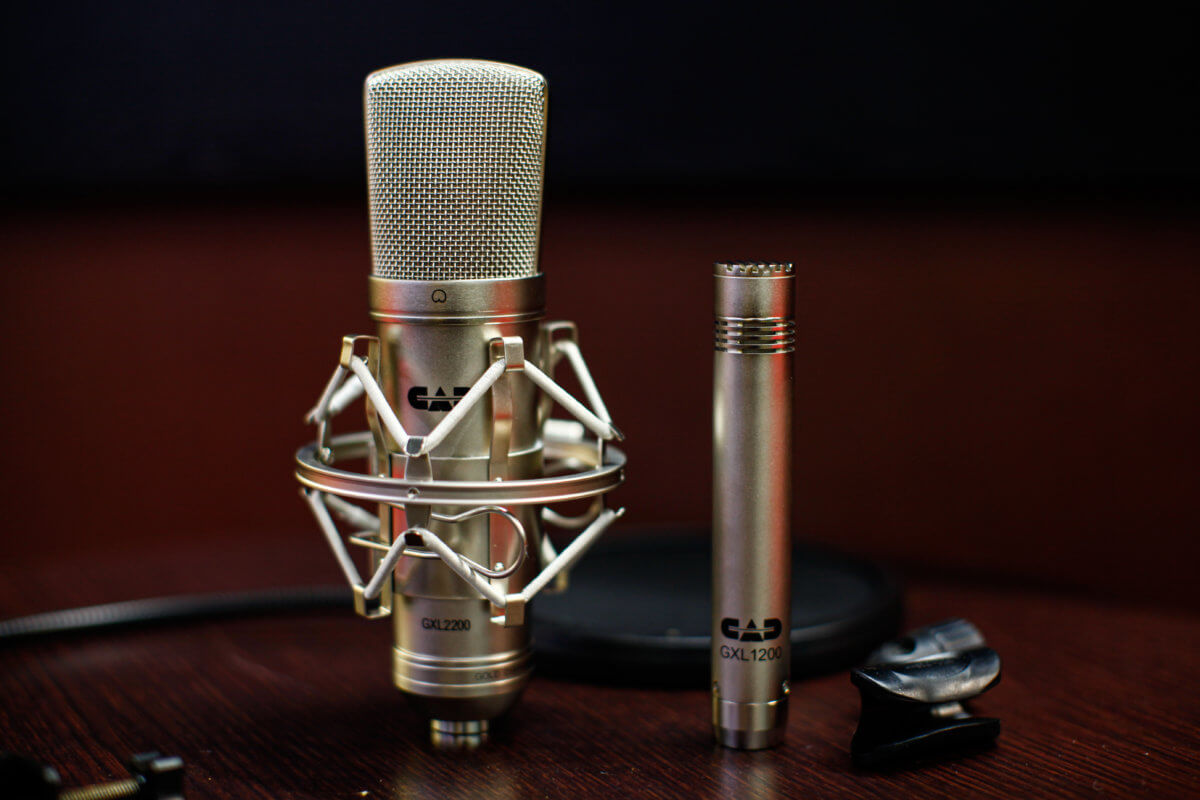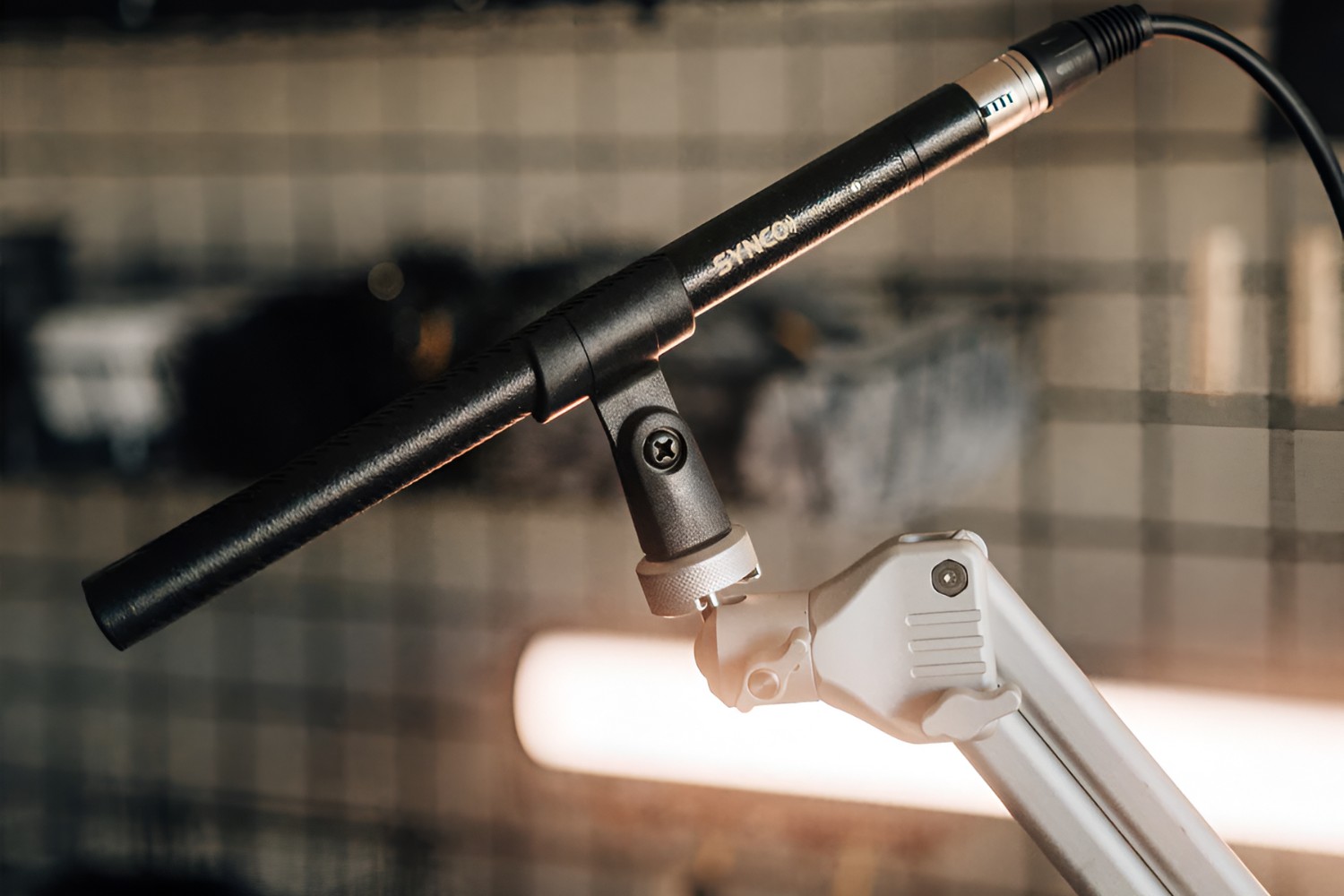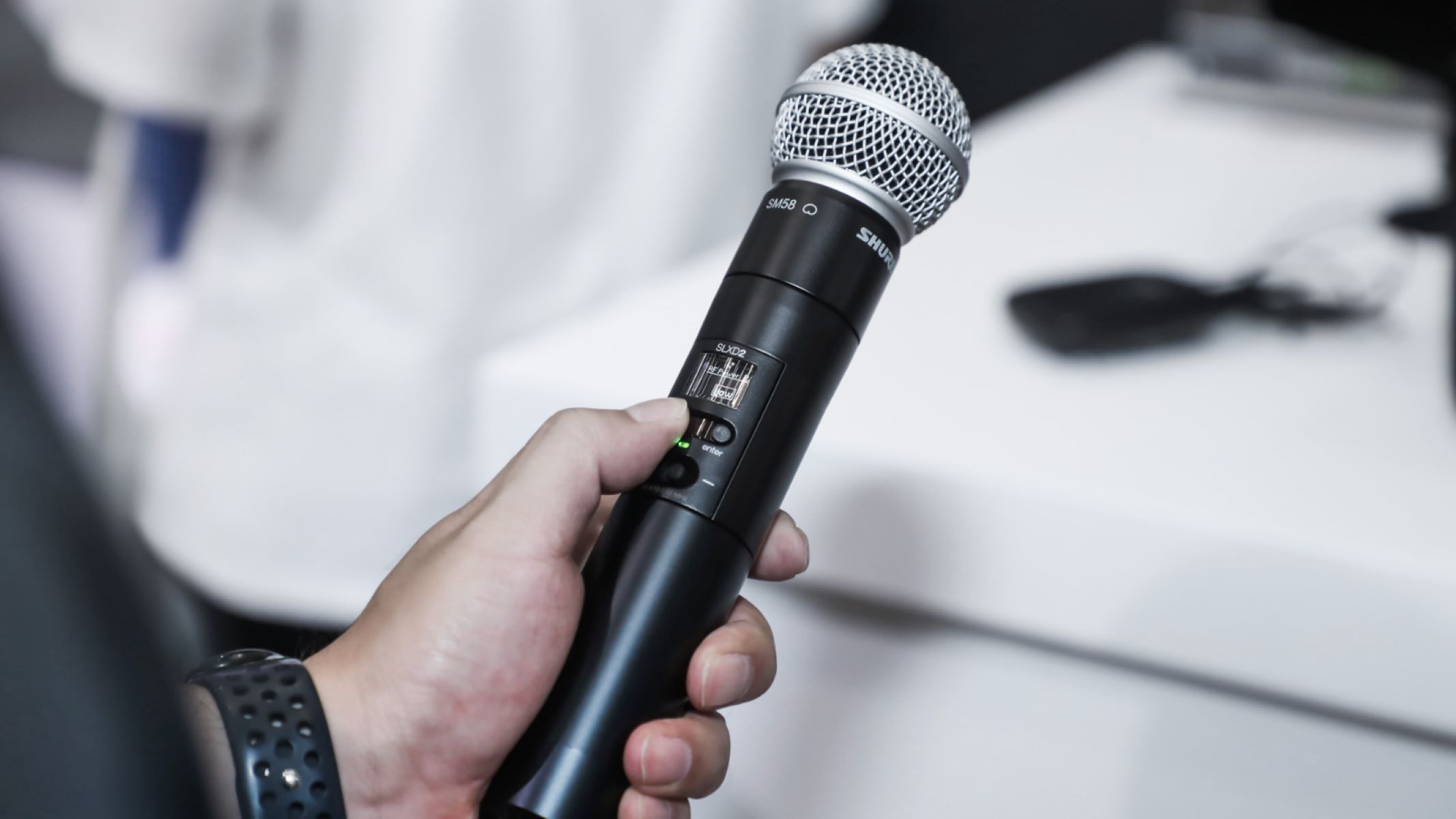Introduction
Introduction
Repairing a condenser microphone may seem like a daunting task, but with the right guidance and a bit of patience, it can be a rewarding experience. Whether your microphone is producing distorted sound, experiencing intermittent connectivity issues, or simply failing to function altogether, understanding how to troubleshoot and repair it can save you both time and money. In this comprehensive guide, we will walk you through the step-by-step process of repairing a condenser microphone, providing you with the knowledge and confidence to tackle this task with ease.
A condenser microphone is a valuable tool for capturing high-quality audio, commonly used in recording studios, live performances, and podcasting. When faced with technical issues, it's essential to know how to diagnose and address the problem effectively. By learning the inner workings of your microphone and gaining insight into common issues, you can extend the lifespan of your equipment and maintain its optimal performance.
Throughout this guide, we will explore the tools and materials needed for the repair, the disassembly and reassembly process, as well as the identification and resolution of common microphone issues. By following these steps, you can breathe new life into your condenser microphone and continue to produce professional-grade audio recordings. Let's embark on this journey to revive your microphone and unleash its full potential.
Tools and Materials Needed
Tools and Materials Needed
Before delving into the repair process, it’s crucial to gather the necessary tools and materials to ensure a smooth and efficient experience. Here’s a comprehensive list of items that you will need:
- Screwdriver set: A precision screwdriver set with various head types, including Phillips, flathead, and Torx, will be essential for disassembling the microphone casing and accessing its internal components.
- Anti-static mat and wrist strap: To prevent damage from electrostatic discharge, an anti-static mat and wrist strap are vital for creating a safe workspace when handling sensitive electronic components.
- Clean, dry cloth: Having a lint-free cloth on hand will allow you to wipe down the microphone components and maintain a clean working environment throughout the repair process.
- Replacement parts (if necessary): Depending on the identified issue, you may need to acquire specific replacement parts, such as capacitors, diaphragms, or connectors, to address the malfunction effectively.
- Isopropyl alcohol and cotton swabs: These items are useful for cleaning electrical contacts and removing any dust or debris that may be affecting the microphone’s performance.
- Multi-meter: A multi-meter will enable you to test the continuity, voltage, and resistance of electrical circuits within the microphone, aiding in the diagnosis of potential issues.
- Soldering iron and solder: If soldering is required to repair or replace components, a quality soldering iron and solder will be indispensable for ensuring secure and reliable connections.
- Small brush: A soft-bristled brush can be used to gently remove dust and dirt from delicate components without causing damage.
- Small containers: Utilize small containers or compartments to organize and store the screws and small parts removed during the disassembly process, preventing loss or confusion during reassembly.
By assembling these tools and materials, you will be well-equipped to address a wide range of potential issues that may arise during the microphone repair process. Having a designated workspace with ample lighting and a clutter-free environment will further facilitate a successful repair endeavor. Now that you have gathered the necessary resources, you are ready to embark on the journey of repairing your condenser microphone.
Disassembling the Microphone
Disassembling the Microphone
Before diving into the disassembly process, it’s crucial to ensure that you are working in a clean and well-lit environment, free from any distractions. Additionally, it’s advisable to have a spacious work area where you can lay out the components and screws systematically to prevent misplacement.
Begin by carefully examining the condenser microphone to identify any visible screws or fasteners securing the outer casing. Using the appropriate screwdriver from your set, gently remove these screws, taking care to keep them organized and separate from one another. It’s beneficial to use small containers or compartments to store the screws, labeling them if necessary to indicate their original placement within the microphone.
As you proceed, pay close attention to any adhesive or clips that may be holding the casing together. Utilize a plastic opening tool or a spudger to carefully pry apart the casing, ensuring that you exert gentle and even pressure to avoid damaging the delicate components within. Take note of the orientation of the components and their connections as you disassemble the microphone, as this will aid in the reassembly process later on.
Once the outer casing is removed, you will gain access to the internal circuitry and components of the microphone. Take your time to observe and familiarize yourself with the layout, noting the position of the diaphragm, the circuit board, and any other relevant components. It’s important to handle these components with care, avoiding excessive force or sudden movements that could result in damage.
As you progress through the disassembly, document the steps you take, either through written notes or photographs, to ensure that you can refer back to them during the reassembly phase. This documentation will serve as a valuable reference, especially if you encounter any challenges or uncertainties along the way.
By following these meticulous disassembly procedures, you will effectively gain access to the internal workings of the condenser microphone, setting the stage for the subsequent identification and resolution of any issues affecting its performance.
Identifying the Issue
Identifying the Issue
Once the condenser microphone is disassembled, it’s time to methodically assess and identify the underlying issue affecting its functionality. Begin by visually inspecting the internal components for any signs of damage, such as frayed wires, dislodged connections, or visibly defective parts. Take note of any abnormalities or irregularities that may indicate the source of the problem.
Next, utilize a multi-meter to conduct electrical tests on the various components, including the diaphragm, capacitors, and circuitry, to measure continuity, resistance, and voltage. This process will help pinpoint any faulty or malfunctioning elements within the microphone, providing valuable insights into the nature of the issue.
If the microphone is exhibiting erratic behavior or intermittent connectivity problems, carefully examine the solder joints and connections for any signs of corrosion, oxidation, or poor soldering. These issues can often lead to unreliable electrical connections and signal disruptions, impacting the microphone’s performance.
Furthermore, inspect the diaphragm for any tears, punctures, or foreign debris that may be impeding its functionality. The diaphragm is a critical component responsible for capturing sound waves, and any damage to it can significantly compromise the microphone’s audio quality.
It’s essential to approach the identification process with thoroughness and attention to detail, as identifying the precise issue is the key to executing an effective repair. Take the time to document your findings, including any observed abnormalities or test results, as this information will guide the subsequent repair steps.
By systematically evaluating the internal components and conducting diagnostic tests, you will gain valuable insights into the specific issue plaguing your condenser microphone. This diagnostic phase sets the stage for the targeted repair and restoration of the microphone’s optimal functionality, ensuring that it can once again deliver pristine audio recordings.
Repairing the Issue
Repairing the Issue
After identifying the underlying issue affecting your condenser microphone, it’s time to embark on the repair process, addressing the specific components or connections that are contributing to the malfunction. Depending on the nature of the issue, the repair steps may vary, but the following general guidelines will help you navigate this crucial phase effectively.
If the issue stems from damaged or degraded solder joints, carefully reflow the solder using a quality soldering iron and fresh solder. Pay close attention to the temperature and duration of the soldering process, ensuring that the connections are secure and free from any cold joints or insufficient bonding. By reflowing the solder joints, you can restore the integrity of the electrical connections, resolving intermittent connectivity issues and signal disruptions.
For components exhibiting visible damage, such as capacitors or resistors, carefully desolder and replace these elements with suitable replacements. Ensure that the replacement components match the specifications of the original parts, and take care to observe proper polarity and orientation during the installation process. Thoroughly inspect the surrounding area for any collateral damage or issues that may have arisen as a result of the component failure.
If the diaphragm is compromised, necessitating replacement, exercise caution and precision when removing the old diaphragm and installing the new one. Follow the manufacturer’s guidelines and recommendations for diaphragm replacement, ensuring that the new diaphragm is aligned and secured according to the microphone’s specifications. Take care to minimize dust and debris during this process, as foreign particles can adversely affect the diaphragm’s performance.
Throughout the repair process, refer to any documentation or notes from the identification phase, leveraging your findings to guide the targeted repair efforts. Take a methodical approach, focusing on one issue at a time, and periodically test the microphone’s functionality to gauge the impact of each repair step. This iterative approach will allow you to assess the effectiveness of the repairs and make any necessary adjustments before proceeding.
By meticulously addressing the identified issues and executing the necessary repairs with precision and care, you will rejuvenate your condenser microphone, restoring its functionality and ensuring that it can once again deliver exceptional audio quality. The repair phase represents a pivotal stage in the restoration process, bringing your microphone one step closer to optimal performance.
Reassembling the Microphone
Reassembling the Microphone
As you approach the reassembly phase of the condenser microphone repair, meticulous attention to detail and methodical precision are essential to ensure a successful and seamless reconstruction of the device. Begin by referring to any documentation or photographs taken during the disassembly process, using these resources to guide the reassembly and component placement.
Start by carefully positioning the internal components, such as the circuit board, diaphragm, and associated wiring, in their respective locations within the microphone casing. Take note of any specific orientations or alignments specified by the manufacturer, ensuring that each component fits snugly and securely without force or misalignment.
Reattach any connectors, ribbon cables, or wiring harnesses, taking care to seat them firmly and securely without overexerting pressure. Verify that all connections are properly aligned and engaged, minimizing the risk of connectivity issues or intermittent functionality once the microphone is fully reassembled.
As you progress through the reassembly, refer to the documentation from the disassembly phase to guide the placement of screws and fasteners. Utilize the small containers or compartments used during disassembly to access the screws and ensure that each one is returned to its original location, following the reverse order of removal to secure the microphone casing.
Be mindful of any adhesive or clips that may require reapplication or reengagement to secure the casing, taking care to apply even pressure and ensure a uniform fit. Avoid over-tightening screws or fasteners, as this can lead to damage or misalignment of the casing components.
Once the microphone is fully reassembled, perform a visual inspection to verify that all components are in place and that the casing is securely fastened. Take a moment to clean the exterior of the microphone using a clean, dry cloth, removing any fingerprints or smudges accumulated during the reassembly process.
With the reassembly phase complete, you have successfully reconstructed your condenser microphone, integrating the repaired components and ensuring that the device is structurally sound and ready for testing. The diligence and precision applied during the reassembly process are instrumental in achieving a fully functional and reliable microphone ready to capture pristine audio recordings once again.
Testing the Microphone
Testing the Microphone
After completing the reassembly of your condenser microphone, the final crucial step is to conduct comprehensive testing to ensure that the repairs have effectively resolved the identified issues and restored the microphone to optimal functionality. Testing the microphone involves a series of meticulous evaluations and assessments to verify its performance across various parameters.
Begin by connecting the microphone to a suitable audio interface, preamplifier, or recording device, ensuring that all connections are secure and properly configured. Once the microphone is connected, proceed to test its functionality by capturing audio at different volume levels and frequencies, allowing you to assess the clarity, sensitivity, and fidelity of the recorded sound.
Conduct a thorough audio playback review, listening attentively for any distortions, artifacts, or irregularities in the captured sound. Pay close attention to the microphone’s ability to reproduce nuanced details and accurately capture a wide dynamic range, ensuring that it delivers professional-grade audio quality without any discernible issues.
Test the microphone’s sensitivity and directional characteristics by speaking or singing into it from various distances and angles, evaluating its ability to capture sound accurately and consistently. This evaluation will help ascertain whether the repaired microphone maintains its intended polar patterns and sensitivity, essential for diverse recording scenarios.
If the microphone features adjustable settings or switches, such as polar pattern selectors or high-pass filters, test each setting methodically to confirm that the adjustments function as intended and do not introduce any unwanted noise or anomalies into the audio signal.
Additionally, perform a series of stress tests on the microphone, subjecting it to sudden movements, taps, and handling noise to gauge its resilience and stability. This assessment will reveal any potential mechanical issues or loose components that may impact the microphone’s performance during real-world usage.
Throughout the testing process, document your observations and any anomalies that arise, allowing you to track the microphone’s performance and identify any areas that may require further attention or adjustment. By maintaining detailed records, you can ensure that the microphone undergoes a thorough and rigorous evaluation, leaving no room for overlooked issues.
Upon completing the comprehensive testing regimen, you will have a clear understanding of the effectiveness of the repairs and the microphone’s restored functionality. A successfully repaired condenser microphone will exhibit consistent, high-quality performance across a range of testing scenarios, providing you with the confidence and assurance that your valuable audio equipment has been rejuvenated and is ready to deliver exceptional results once again.

























